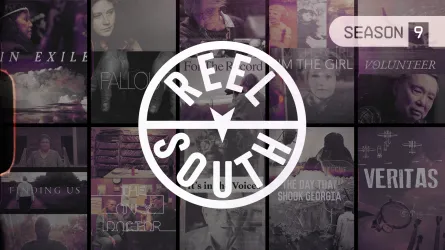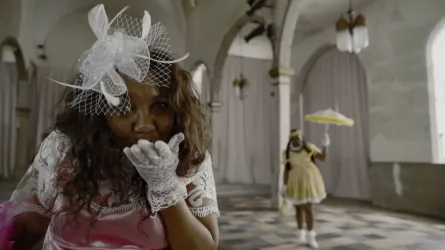In Family Pictures USA, a new PBS series created and hosted by accomplished filmmaker Thomas Allen Harris, contrasting and diverse stories from across the South align. In two, hour-long documentaries, Harris and company fare into central and eastern North Carolina and Florida's southwestern paradise coast to dust off generations of family photo albums. It happens, not so surprisingly, that two women behind the show's successful southern showcase are the two brain-children of Reel South. We talked with Rachel Raney of North Carolina's UNC-TV and Amy Shumaker of Florida's WGCU about bringing this new show to their local communities and how impactful it is to have their communities voices heard.
Family Pictures USA is a three-part documentary series on PBS exploring family photos in episodes in North Carolina, Florida and Detroit. This is a unique lens in which to view the South. Why do you think it works so well?
AS: The key to the Family Pictures USA format is that this is an engagement-to-production model created by co-executive producers Thomas Allen Harris and Don Perry. Beginning the production process with community photo-sharing events gives folks an opportunity to share family pictures and personal stories. Much like Reel South brings authentic Southern voices to public television audiences, Family Pictures USA does the same although in this show, people get to tell their own stories through the lens of their family photo album. The producers then take a deeper dive with some of most compelling stories that come out of the photo-share. It is good way to source and elevate local stories for regional and national audiences.
RR: I think Family Pictures USA came away from North Carolina with a very authentic portrait of the folks that live here. And that’s because Southerners were allowed to completely speak for themselves. Thomas gets folks to open up about their family histories but doesn’t filter their personal experiences through some preconceived notion of the South.
Why did you want to bring this type of documentary to your regions and stations?
RR: From the first time I met Thomas and heard about his storytelling approach I knew that North Carolinians would love this project. I’ve always been struck but the deep knowledge that North Carolinians have about their state and their pride of all things Tar Heel.
AS: Public media stations are always looking for new ways to engage local audiences. As a rural-facing station, we were able to hold two primary community photo-sharing events. One in Fort Myers which is considered more urban and coastal, and another in Immokalee, Florida which is farm and cattle country. The project expanded our capacity to tell local stories and to show the diversity of the region. It also brought the entire station staff together on one project. Folks who normally don’t work in production were part of the process. Overall it was a great experience for WGCU.
What did you learn about your communities in this process?
RR: I learned how deeply rural North Carolina really was until recent decades and how important farming and textiles were to the state and its families. The number of folks that come from racially blended families was also striking.
AS: WGCU, based in Southwest Florida, has a seasonal tourist economy. As a newcomer to the area, I had no idea about the rich Native American and pioneer history here. We found many connections between communities and families. There is so much more to see in Naples, Fort Myers and Sanibel Island than the beautiful beaches. We’re planning more local work around the concept of the family photo album.
What have and what will your communities learn about each other?
RR: I think––and hope––that folks will recognize the power of sharing family stories outside our own families.
AS: One mission of the series is to explore communities through the family album to show viewers that we have more in common than we realize. That is what happened here. There are deep connections between families in this region. To see that unfold during the production process was exciting. We had cousins who met for the first time, and old family friends were able to reconnect. The most surprising history revealed through family albums was between the pioneer families and the Seminole tribe. We were able to explore that further in our Family Pictures LOCAL show.
How do you continue this FPUSA mission moving forward?
RR: I think that as a station, Thomas has taught us a new way of engaging our community, which will influence how we produce stories moving forward.
AS: WGCU is producing short digital videos with local community members who were not part of the national show. More community photo-sharing events will help us mine even more local stories for the station and to contribute to the Family Pictures USA national family photo album.
--
Family Pictures USA premieres this month on PBS stations nationwide.
Category
Share


